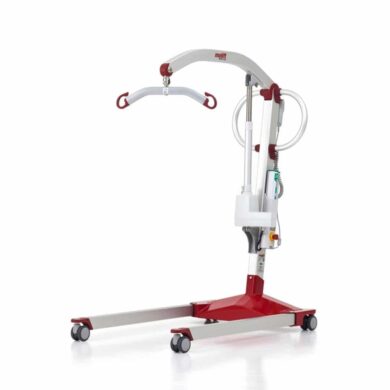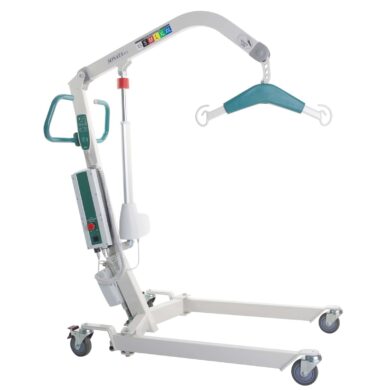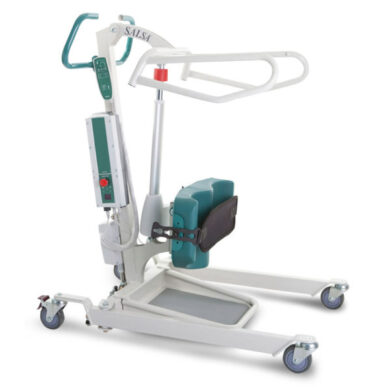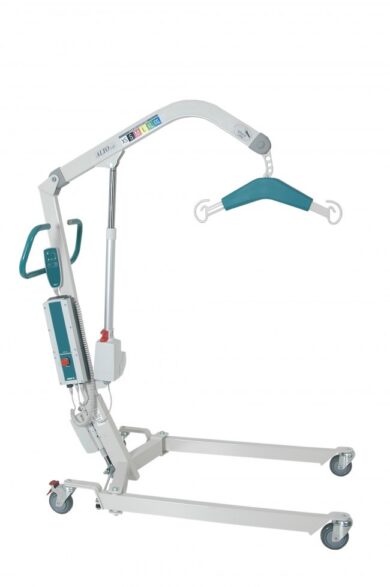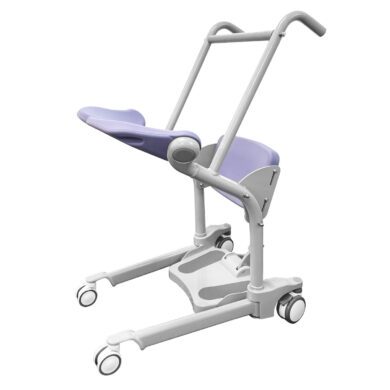Floor Hoists
Looking to hire instead? Click here
Loading...
No more products to load.
No more products to load.
Patient Sling Lifter Hoists For Sale – Australia Wide Delivery
Patient Hoist’s / Patient Lifters are a simple mobility equipment item that provides the means to lift an individual in either an aged care or residential home setting. Patient Lifters typically consist of 3 main sections including spreading legs (these can be manually or electrically operated) to allow greater stability when under load, a mast that supports a boom which electrically raises and lowers the sling. Generally most lifters have safety features such as manual lowering should power be unavailable to lower an individual. Additionally there should be an emergency stop button located on the control box.
Patient Hoists / Lifters come in distinct types with specific boom attachment devices.
Yoke Patient Hoist
Similar appearance to a coat hanger with 2 – 4 hooks for sling attachment. Newer versions are designed with closed, secure hooks to prevent sling disconnection during use. Yoke type Patient Hoists / Lifters enables carers to lift patients from a bed, or floor, for transfer to a wheelchair or other locations including bathroom, bedroom, etc.
Pivot Patient Hoist
U shaped boom attachment that spreads sling connection to 4 connection points. Pivot Hoists tend to offer greater control in management of an individual’s safety and comfort during the lifting and transit phase. Sling types often accommodate full back and head support.
Standing Patient Hoist
This type of Patient Hoist / Lifter is most often used to help individuals to stand from a seated position, to assist dressing or undressing, and moving an individual to locations such as a bathroom, bedroom, etc. Standing hoists can also be used to transfer from beds and wheelchairs and are often used with individuals too weak to stand without assistance.
Who should use Patient Hoists / Lifters?
It is important to note that carers should be trained to use a Patient Hoist / Lifter with specific understanding of the needs of the individual they are assisting. This is important because it can be a stressful experience for someone who is being assisted with a Patient Hoist / Lifter and if the equipment or carer training is deficient this could be potentially dangerous. Typically 2 carers should assist the lift and transfer of an individual using a Patient Hoist / Lifter. We recommend that if you are considering using a Patient Hoist / Lifter with a family member or friend that you seek a professional assessment from a qualified Occupational Therapist or Physiotherapist first, to ensure they can advise the appropriate Patient Lifter / Hoist and Sling that should be used. Do not rely on any unqualified advice regarding Patient Hoist / Lifter and Slings as there is real potential for harm follow incorrect advice. Most community care organisations can assist in this area as well as independent organisations qualified to provide professional assessments and advice.
We often have enquiries for this equipment and are careful to point out that we can certainly explain and demonstrate the equipment function but are unqualified to assess the needs for an individual as everyone’s condition and needs vary. Companies that sell and hire Patient Lifters / Hoists and Slings are NOT necessarily qualified to give advice of the specific combination of Patient Hoist / Lifter and Slings to use based upon your needs unless they follow the specifications provided by a qualified OT or Physio, following an individual’s professional assessment.
Another source of information can be found here, Disability Equipment Risk to Community Carers
For more information or assistance contact us 1300 460 070

